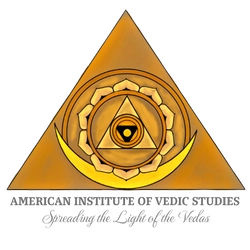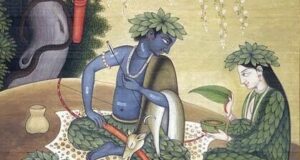This is the first of our three articles on management of the three Doshas of Ayurveda in our difficult world situation today and helpful lifestyle, attitude and behavioral changes to consider.
Vata dosha is the most disease-causing of the three Doshas or biological humors of Vata, Pitta and Kapha in Ayurvedic medicine. It represents the air element that tends to disturb us, unground us and remove us from the heavier elements Earth and Water elements that nurture and sustain our physical existence.
Vata types in their physical appearance are usually thin, low or variable in body weight, taller or shorter than average. They are sensitive, volatile, nervous and anxious, easily disturbed by the uncertainties and challenges of life, particularly those in our new time of stress in the high tech era and the many electrical stimuli around us. Yet we all can get disturbed in this stressful world when the ongoing outer instability affects us and makes us vulnerable to physical and psychological imbalances.
Vata dosha is connected to disease conditions such as loss of body weight, debility, chronic and degenerative conditions, nervous and psychological disorders. High Vata results in pain, agitation, disequilibrium and dysfunction of of body and mind. Vata dosha and its complications increases as we get older and are tied to the aging process.
At physical level, Vata dosha relates to irregular digestion, constiption, dry skin, allergies, arthritis, low immune function, exhaustion and debility. At nervous and psychological levels, stress. insomnia, bad dreams, fear, worry, anxiety, loneliness and hypersensitivity, are complications of Vata as well.
Our Vata Increasing Lifestyle
In our fast-moving information technology era compounded by the pandemic, Vata dosha is particularly challenged. We are bombarded with disturbing electrical stimulation from our many media devices from cell phones to computers, to a fear and even panic oriented media that increases the agitated qualities of Vata. In addition, we are taking more pharmaceutical and recreational drugs that can be taxing to our nervous systems, drying and depleting them and upsetting our organic equilibrium.
In our hectic lifestyle, we are frequently on the go, active, moving, changing residences, jobs or even partners. We have irregular diets with fast food and artificial foods, seldom true natural nourishment in a calm environment. We rarely take time to practice Yoga, meditate or ground ourselves in nature. This results in a situation for Vata dosha to increase on physical and psychological levels.
Managing Vata Dosha
At a physical level, to counter high Vata dosha requires a rich and nutritive diet with regular cooked meals. Best foods are whole grains, protein and fiber rich beans and dals, root vegetables, seeds, nuts and dairy products with adequate oils in the diet.
For countering the nervous digestion of Vata types, best are mild aromatic spices like ginger, cinnamon, cardamom, turmeric and cumin to aid in digestion, particularly of heavier food items. Hot spices like black pepper, chilies, mustard can be used unless there is an excess of dryness in the body.
Relative to life-style, going outdoors into nature, with fresh air, light exercise, quiet evenings and sleeping early are essential, with proper rest and relaxation, extending to vacations, healing and yoga retreats.
There are many Ayurvedic tonic herbs for lowering Vata dosha at a physical level. Vata types need to increase their Ojas or primary vital energy with such strengthening herbs as ashwagandha, bala, shatavari, shilajit. These are best taken in Ayurvedic preparations like ashwagandha arishta, ashwagandha lehyam, chyavan prash, brahma rasayana, or these same herbs taken in milk decoctions with ghee.
The Ayurvedic laxative formula triphala is important for reducing Vata in the large intestine in main site of accumulation in the body that sets in motion its disease causing energies.
For the mind, nervous system and bones, herbs like brahmi, calamus, shankha pushpi, jatamamsi and ashwagandha are excellent. Brahmi ghee is excellent.
Warm oil massage is very important with sesame based Ayurvedic oils like balashwagandha tailam, mahanarayan or dhanvantaram oils, abundantly applied to the body, including to the head, neck, ears, spine and joints. Vata dosha types need their daily oil application, particularly before sleep. Even simple sesame oil is very good.
Yoga asanas of a gentle, slow and calming nature are great for Vata dosha, with slow and deep pranayama with no forceful practices, inspired devotional chanting, with steady concentration and grounding forms of meditation are very helpful. Pratyahara, yogic relaxation and Yoga Nidra are excellent, letting go of the mind along with its worry and anxiety.
Psychological Considerations
Most Vata dosha problems begin with agitation and indecisiveness in the mind, inability to cope and loss of composure, compounded by worry and negative thinking that may become compulsive. Vata types must cultivate stillness, calmness, detachment and peace of mind, with patience, faith and determination.
We must never let the outer world become greater than our own inner nature which contains the powers of the entire universe. For this meditation is very helpful, particularly drawing our awareness into the hridaya or spiritual heart that is our inner source of vitality. Mantra and chanting can help us calm the mind for meditation.
We don’t have to react to everything that is happening in the world, most of which doesn’t concern us personally. If we look at history we see challenges in every era, many much worse than what we are experiencing today. We need a good sense of humor to counter the negativity of Vata, and a receptivity to the benefic powers of higher consciousness that is the deeper reality of the universe. We can always turn within and let go of outer disturbances.
To reduce Vata we must give up the fearful mind and let the bliss of consciousness guide us from within. This is possible as Vata at a higher level as air and space gives us a sense that our true reality is beyond the material world. Let us move like the wind, passing through, embracing and transcending all, but not be like a leaf blown in the wind!
Dr. David Frawley







